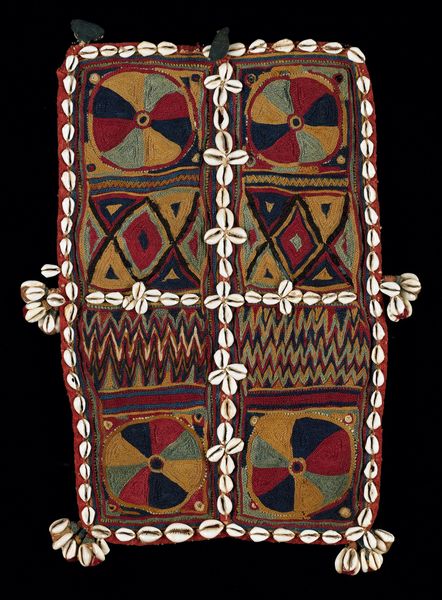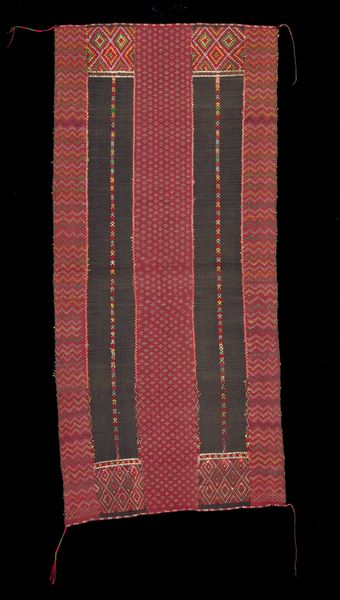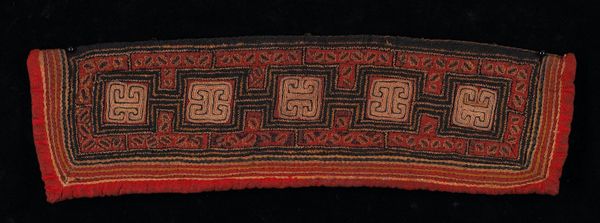
silk, textile, cotton
#
silk
#
pattern
#
textile
#
geometric pattern
#
organic pattern
#
geometric
#
pattern repetition
#
cotton
#
islamic-art
Dimensions: 38 1/2 x 3 1/4 in. (97.79 x 8.26 cm)
Copyright: Public Domain
Curator: What strikes you immediately about this Kamarband, a textile piece dating from the late 19th century, now residing here at the Minneapolis Institute of Art? Editor: The intense visual language! The high contrast and tightly packed geometry definitely activate the object, perhaps mirroring the energy of someone wearing it. I wonder about its intended audience. Curator: It’s constructed with silk and cotton, right? Think about the communities that developed the craft of weaving—specifically waistbands—across continents and time. Editor: Absolutely. It makes me consider the socio-economic contexts around the production and consumption of luxury textiles like this. It speaks to wealth, class, trade networks. But were such craft practices exclusively available to men in society, for example? Curator: These artisanal pieces involve the labor of individuals whose contributions often go unacknowledged. We must consider not just the aesthetic outcome, but the means of production and the social context surrounding that labor. The act of repeated patterning implies not just an aesthetic function but also a repetitive task for the maker. Editor: Definitely. The patterns are geometric and seem somehow…coded. Maybe mirroring power structures, status or community allegiance of the period and what their semiotics implied. It reminds me to reflect upon textiles from South Asia during British colonial rule, how craft became deeply intertwined with self-determination movements, gender, and expressions of identity and resistance. Curator: And from a materialist perspective, that connection is key: seeing the textile as not just an object of beauty, but as a physical embodiment of social, economic, and even political forces at play in late 19th-century society. The piece isn't just made "of" the time but "by" the time. Editor: It reminds me of the enduring power of cloth: not merely as covering, but as carriers of identity, coded messages, defiance of established hierarchies... a cultural marker deeply rooted in histories that speak truth to power. Curator: Looking closely allows us to recognize the complexities involved in even a single object; we’re invited to consider how textiles facilitate human life, social relations, and meaning-making across history. Editor: This encounter today also reinforces how studying visual language and culture offers lenses through which to perceive global experiences from underrepresented perspectives and uplift otherwise invisible stories.
Comments
No comments
Be the first to comment and join the conversation on the ultimate creative platform.













